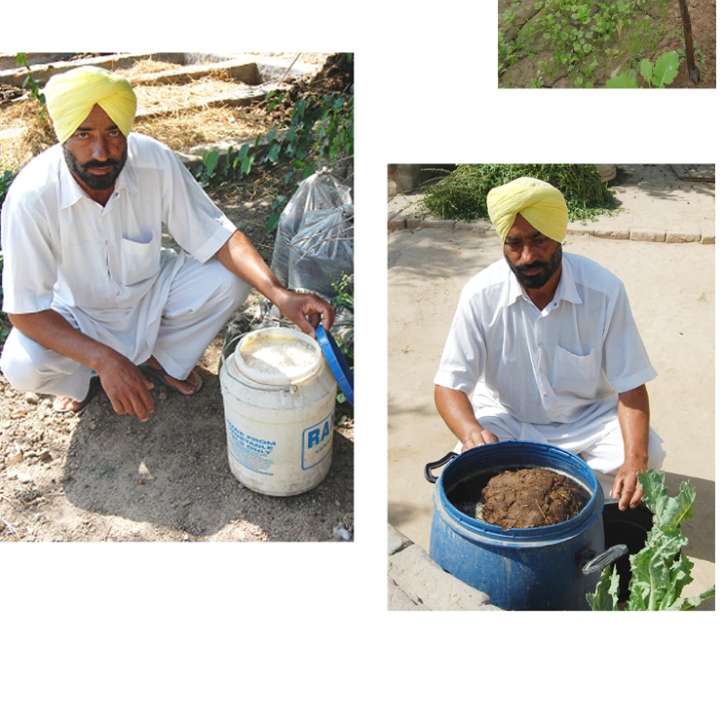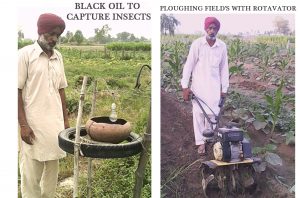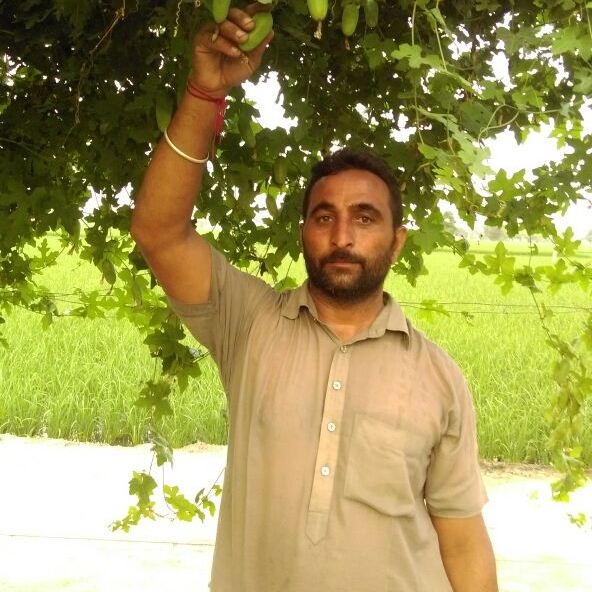A young farmer from abroad made a name for himself in Punjab by cultivating strawberries- Navjot Singh Shergill
Every person certainly thinks about progress and distinction in their field. This mindset can lift a person from earth to the skies. The success of each farmer depends upon his passion for doing innovative things that deviated from traditional methods.
This story is about one such farmer who deviated from standard farming and chose his own way in agriculture, which very few people were aware of. The name of this young farmer is Navjot Singh Shergill. He lives in Majal Khurad village in Patiala. The practices adopted by Navjot inspired many other farmers.
I always dreamt of doing something different in farming so that people should know me by my innovative work and not by my name. Hence, I decided to work on something new- Navjot Singh Shergill
Navjot Singh was born and raised in the UK, but as he grew older, he started to feel a lack because he missed the fragrance of the soil of his homeland. Therefore, he returned to his village in Punjab, India. Navjot pursued his MBA and then decided to get into agriculture on a large scale. He started Emu farming, but he did not succeed as there is a very low demand for Emu in Indian markets. He was disappointed by this failure but did not lose hope. He was encouraged by his elder brother Gurpreet Singh Shergill, a farmer in Punjab and known as The King of Flowers. Gurpreet bought a revolution in the cultivation of flowers in Punjab and proved what others could not even think of.
Navjot Singh followed his brother’s suggestion and started gaining information about strawberry cultivation. He gained enough knowledge from social media and informative websites and then decided to start practising in the fields to have more practical knowledge.
I then went to Pune, Maharashtra, for acquiring more understanding of strawberry cultivation and visited various fields and met many farmers- Navjot Singh Shergill
There he obtained all the information about Strawberries like, the climate in which they flourish, making more plants from a single one, its primary plant and from where did strawberries come in India.
In India, the mother plant is imported from California, and then the following plants are made from this mother plant- Navjot Singh Shergill
After returning from Pune, he investigated the environmental conditions in Punjab for strawberry cultivation. He then brought 14-15 thousand plants from Pune and cultivated them in a half-acre land. The total cost summed to Rs 2-3 lakhs. He felt great but was also afraid to fail because of the market issues. However, when the fruits ripened, and Navjot took them to the market for sale, the demand for this fruit was sky-high. All his fears were converted into happiness.
I was very much delighted by the fact that all the people who stopped me from doing this business were now praising me; it was a moment of realization and pride as it took a lot of my money and time- Navjot Singh Shergill
After the continuous success of strawberry cultivation, Navjot realized that some of the fruits remained small while others were fully ripened, and therefore their prices were significantly lower in the market. He felt the urgent need to solve this problem.
There is a saying, “When a person falls and rises, he achieves success on higher levels.”
Then, he started processing the small fruits.
I acquired training from Krishi Vigyan Kendra, Patiala in fruit processing and started making 2-3 items- Navjot Singh Shergill
The harvesting of strawberries required labour; hence, Navjot hired people from his village for harvesting, sorting and processing. By doing this, Navjot created employment opportunities for the people living in his village. Further, he installed machines for processing and therefore started making processed items in the field only. He named the brand Coco-Orchard.
He made the following items-
- Strawberry Crush
- Strawberry Jam
- Strawberry Barfi
All the procedures from processing to packing are taken along under the supervision of Navjot. The Crush and Jam are packed in glass bottles, and when the products are exported to the other states, the bottles are packed in cardboard boxes. The trays of 2 kg cost at least 500-600 Rs and contain sections, each weighing 200-250 gm.
I then started visiting Kisan Mela’s and set up my own stalls there- Navjot Singh Shergill
The stalls gained Navjot a lot of marketing and recognition. People started to wait for his products in the upcoming Melas. He met a doctor from the agriculture field during the Mela; this is a very precious moment of his life. The doctor praised him because he is making processed items out of strawberries, while most people do not know anything about strawberry cultivation. Navjot has a Facebook page named Coco-Orchard, where he provides all the information about strawberry cultivation and markets his produce.
Navjot is now acknowledged enough by the people that he does not have to go to any market to promote his products.
FUTURE PLANS
He wants to grow his strawberry business to an extent where he can grow this delicious fruit in a 4-acre land. Navjot wants to export his produce to foreign countries like Dubai as there the demand for strawberries is higher.
MESSAGE
Farmers who wish to grow strawberries must acquire complete information regarding the same before they start cultivation. Strawberry cultivation requires a lot of money and time and cannot flourish without supervision.











